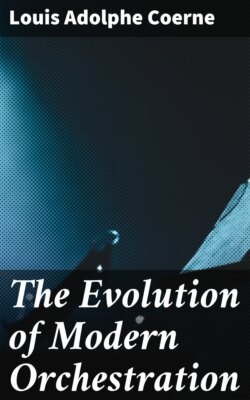Читать книгу The Evolution of Modern Orchestration - Louis Adolphe Coerne - Страница 43
III.
ОглавлениеItaly. In 1770, Jomelli, who for fifteen years had occupied the post of Hofkapellmeister in Stuttgart, had just returned to Italy, where he found Paesiello in high favor, and Cimarosa about to begin his operatic career. Both Paesiello and Cimarosa were soon to pose as rivals to Piccini as well as to each other, but of the two, Paesiello was possessed of more scholarly attributes which found outlet in numerous independent instrumental works, including twelve symphonies and six quartets, whereas Cimarosa displayed simpler though more spontaneous fertility, and his works are better known to posterity with whom he ranks as one of the greatest Italian composers of his day. Nevertheless, the instrumentation of both Paesiello and Cimarosa was weak and non-progressive. The most prominent contemporary exponent of chamber music was Boccherini, who is credited with the authorship of no less than three hundred and sixty trios, quartets, quintets and the like, besides twenty symphonies. In antithesis to the transportation into Germany of exotic ideas, Jomelli and other Italians living in Germany showed the influence of their new surroundings by improved orchestration, though unfortunately this had but little immediate effect on their compatriots at home. For the Italians still held tenaciously to their traditions, and handled the orchestra principally as a means of support for and contrast to the human voice. Fearful lest the singer should be overpowered, they were overcautious; as a result, their scoring was thin, and decidedly weak in the bass. Jomelli's efforts are therefore especially praiseworthy. In his operas, the orchestra acquired greater importance, and, like Sammartini, he awakened also a keener interest for purely instrumental music. He was one of the first to make really effective use of the crescendo, increased the efficiency of the violins by adding richer and more varied ornamentation, and showed a tendency to make proper use of tone-color. In a word, his instrumentation, together with that of Pergolesi, ushered in a new epoch in Italy.
